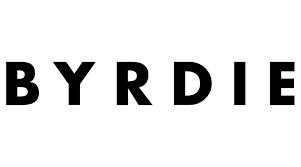PDO Threads
In Pursuit of Youthful Contours
Unraveling the Secret of PDO Threads
In an era where non-surgical aesthetics are leading the beauty trend, polydioxanone (PDO) threads have emerged as a game-changing solution, redefining the art of facial contouring and skin rejuvenation. This relatively novel technique, hailing from the realms of medical science, has been ushering in a transformative wave in the field of aesthetic medicine.
PDO threads, once exclusively used in cardiovascular surgeries for their high flexibility and durability, have found a new home in aesthetic clinics worldwide. In the hands of skilled medical practitioners, they’ve become a powerful tool to lift sagging skin, restore youthful facial contours, and stimulate collagen production.
The concept is surprisingly simple: a practitioner inserts absorbable PDO threads beneath the skin using a thin needle. These threads provide an immediate lifting effect, hoisting loose and sagging skin to its more youthful position. However, their power doesn’t stop there. As the threads dissolve naturally over four to six months, they trigger the body’s healing response, promoting collagen production, and yielding a rejuvenating effect that lasts even after the threads are gone.
Still, PDO threads are not a panacea for aging. While they offer a minimally invasive alternative to a traditional facelift, they can’t match the dramatic results of surgical intervention. Ideal candidates are typically those experiencing early signs of aging, with mild to moderate sagging skin.
While the promise of a lunchtime facelift can be enticing, potential patients must ensure they’re in qualified hands. The success and safety of a PDO thread lift depend largely on the provider’s expertise. The American Society of Plastic Surgeons emphasizes the importance of choosing a board-certified professional for any cosmetic procedure, including PDO thread lifts.
In the race against time, PDO threads provide an attractive pitstop. They’re proof of how far we’ve come in blending scientific innovation with aesthetic aspiration. As research progresses and techniques continue to be refined, we can look forward to even more safe and effective treatments to keep us feeling our best, at any age.
The journey to a more confident you starts with one decision. That is the decision to get treated, why wait Book Online today? If you’re on the fence or have questions brewing, remember: We at SullivanDermatology are always here to help.Videos
PDO Thread Lifts
If you’re dealing with signs of aging like sagging skin, wrinkles, or diminished facial contours, a PDO thread lift might be the solution you’re seeking. Ideal for those unwilling or unable to undergo invasive procedures, the thread lift promises a noticeable yet natural-looking improvement in the skin’s appearance.
A thread lift, also known as a thread face lift, is a non-surgical cosmetic procedure that uses temporary, medical-grade PDO (Polydioxanone) threads to lift and tighten the skin. This minimally invasive treatment offers a less risky and more affordable alternative to traditional facelift surgery.
The PDO thread lift works by inserting thin, absorbable PDO threads beneath the skin using a fine needle. These threads latch onto the skin from the inside, allowing the practitioner to reposition and lift the skin. The thread face lift doesn’t just offer immediate lifting benefits; it also promotes the production of collagen, which helps maintain the youthful look long after the procedure.
The entire process is quite swift, typically taking around an hour. A local anesthetic is used to ensure comfort, making the thread lift a fairly comfortable procedure with minimal downtime.
Patients often report immediate results post-procedure, with the full effects of the thread face lift becoming apparent after a few weeks once the collagen production has been stimulated. The results of a PDO thread lift are semi-permanent, typically lasting between one to two years.
The exact longevity of the results varies based on individual factors such as age, lifestyle, and skin condition. It’s also important to note that while a thread lift can significantly enhance your appearance, it doesn’t stop the natural aging process.
When considering the PDO thread lift cost, it’s essential to know that it varies depending on factors like the complexity of the procedure and your geographical location. However, compared to a traditional facelift, a thread lift is considerably more affordable, making it a popular choice for many individuals.
In conclusion, a PDO thread lift offers an effective and minimally invasive option for those seeking to rejuvenate their appearance. However, it’s crucial to consult with a qualified medical professional before embarking on any cosmetic treatment to ensure it’s the right choice for you.
FAQs About PDO Threads
PDO threads have a solid safety record in medicine. They're FDA-approved and have been widely used in surgeries for years. However, as with any procedure, there are potential risks, such as infection, bruising, and irregular skin contours.
A local anesthetic is used during the procedure to ensure patient comfort. Most patients report only mild discomfort.
A PDO thread lift typically takes about 30 minutes to an hour, depending on the areas being treated.
PDO threads can be used on many areas of the face and body. They're commonly used to lift the eyebrows, cheeks, jowls, and neck.
The cost varies depending on the provider and the number of threads used. However, it typically ranges from $1,500 to $4,500.
The results of a PDO thread lift can last from 1 to 2 years. The longevity depends on factors like age, lifestyle, and skin condition.
Possible side effects include swelling, bruising, discomfort, and minor scarring at the needle entry points. These usually resolve within a few days.
Most patients can return to their normal activities within a few days. However, strenuous exercise and excessive facial movements should be avoided for the first week.
Patients are advised to avoid strenuous activity, heat sources like saunas, and direct sun exposure for a week. Sleeping on your back can also help prevent any displacement of the threads.
PDO threads are FDA-approved. However, as always, patients should ensure they're working with a licensed and experienced professional to minimize risks and maximize results.





